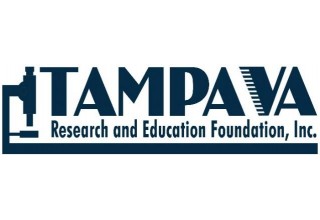
TAMPA, Fla. - February 26, 2018 - (Newswire.com)
Moving patients into and out of beds is dangerous work for health care providers and can even adversely affect patients. Definitive research has proven that special techniques or equipment can prevent injuries, but the healthcare field has been slow to adopt safe patient handling and mobility (SPHM) practices. The 2018 Safe Patient Handling and Mobility/Falls Conference (April 16-18, Orlando, FL) hosted by the Tampa VA Research and Education Foundation, Inc., aims to change that.
A Conference with A Mission
Gail Powell-Cope, Ph.D., a long-time VA nurse researcher and pioneer in SPHM research, initiated annual SPHM conferences almost 10 years ago as one way to recruit champions of SPHM practices at every health care facility from hospitals to long-term care facilities. Most, if not all, attendees who attend the conferences become dedicated advocates of SPHM when they return to their facilities and become key players in facilitating the adoption of these highly beneficial practices that, in the long-term, save significant amounts of money by preventing accidents and injuries. Thus, the Conference accommodates health care providers from SPHM novices to experts, the conference is designed to meet the needs of direct health care providers, managers, administrators, risk managers, educators, industrial hygienists/safety professionals, and researchers of any discipline who are interested in advancing safety for patients and caregivers. Experts in the field will provide cutting-edge research, best practices, and lessons learned in safe patient handling and inpatient fall and fall injury prevention.
Issues in Safe Patient Handling and Mobility
One of the oldest issues in SPHM is bathing ill persons. The effects of cleansing healthcare recipients using a new bathing technique were studied in The Netherlands using a pre‐post study design.This cleansing method provides a full body wash with pre‐heated bathing gloves impregnated with a special cleansing liquid and skin softening lotion. The study explored the efficiency of the gloves and the effects on and experience of healthcare recipients and caregivers. Ergonomic outcomes, that is, those related to repositioning tasks (dynamic loads) and posture (static loads) were measured. This bathing technique may provide additional preventive routes for reducing occupational exposure in nursing practice without compromising the quality of care.
Another important area falls and related injuries, which continue to be a challenge for healthcare teams. Annually in the United States, there are over 800,000 hospital falls. The monetary cost of falls estimated for Medicare alone totaled over 31 billion dollars. A single fall with a related injury is estimated to cost a facility over $30,000 dollars. Preventing falls requires techniques such as root cause analysis and system re‐improvements related to trends occurring in specific units or with individual patients. Interprofessional teams focus not only on the cost savings but the many physiological and psychological effects on patients and families associated with the fall.
An example of a newer issue in SPHM is the home health setting, an area of high growth. The home health setting represents one of the most difficult in which to promote safe patient handling. The projections for the next 5 years predict dramatic growth in the numbers of home health patients. While hospitals are discharging patients sooner, they are sicker. The patient at home is cared for by home health staff but family members are also at risk from hazardous patient handling tasks. Information about home health assessments and tools for promoting safety can benefit both family members and home health staff.
Articles on Safe Patient Handling and Mobility
Campo M, Weiser S, Koenig KL, Nordin M. Work-related musculoskeletal disorders in physical therapists: a prospective cohort study with 1-year follow-up. Physical Therapy. 2008;88(5):608–619. doi:10.2522/ptj.20070127
Powell-Cope G, Baptiste AS, Nelson A. Modification of bed systems and use of accessories to reduce the risk of hospital-bed entrapment. Rehabilitation Nursing. 2005;30(1):9–17.
Powell-Cope G, Nelson A, Tiesman H. Nurses’ working conditions and the nursing shortage. JAMA. 2003;289(13):1632. doi:10.1001/jama.289.13.1632-a
Powell-Cope G, Rugs D. "What elements of the 2013 American Nurses Association Safe Patient Handling and Mobility Standards are reflected in state legislation?" American Journal of Safe Patient Handling & Movement. 2015;5(1):13–18
Full Agenda and Registration information can be found at the following website:
http://www.tampavaref.org/safe-patient-handling/index.htm
Contact Information
Valerie Kelleher
813-558-3948
Valerie.Kelleher@va.gov
Related Images


Press Release Service by Newswire.com
Original Source: Conference Aims to Educate Health Care Field About Benefit of Safe Patient Handling and Mobility Practices
